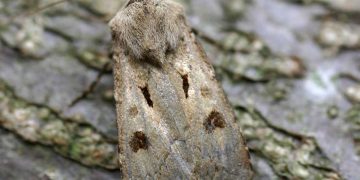Agrotis spp., commonly known as cutworms, are a group of moth larvae that can cause significant damage to crops. They feed on the stem and roots of young plants, causing wilting and death. This article aims to provide an overview of the biology, behavior, and management of Agrotis spp. infestations in agricultural settings.
According to the United States Department of Agriculture (USDA), Agrotis spp. are a significant pest in many parts of the world, including North America, Europe, and Asia. The larvae of Agrotis spp. feed on a wide range of crops, including corn, soybeans, cotton, potatoes, and vegetables.
The life cycle of Agrotis spp. consists of several stages, including egg, larva, pupa, and adult. The larvae are the most damaging stage, as they feed on the underground parts of the plant, causing significant damage. Cutworms are known for their nocturnal behavior and are active during the night, making it difficult to detect their presence in the field.
There are several management strategies that farmers and agricultural professionals can employ to control Agrotis spp. infestations. These include cultural practices, such as crop rotation and planting resistant varieties, as well as chemical control methods, such as insecticides and baits. Additionally, monitoring for the presence of cutworms in the field is critical to determine the severity of the infestation and inform management decisions.
In conclusion, Agrotis spp. infestations can cause significant damage to crops, leading to yield losses and economic damage. Understanding the biology, behavior, and management of these pests is critical to effectively control their populations and protect agricultural production.
#Agrotis spp. #Cutworms #Pest management #Agriculture #Crop damage































